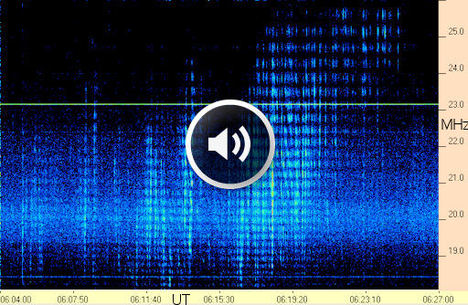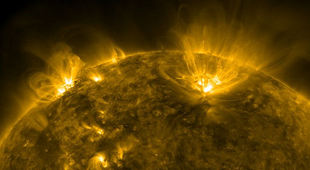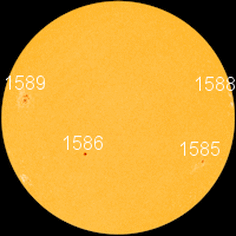Jupiter's radio storms are caused by natural radio lasers in the planet's magnetosphere that sweep past Earth as Jupiter rotates. Electrical currents flowing between Jupiter's upper atmosphere and the volcanic moon Io can boost these emissions to power levels easily detected by ham radio antennas on Earth. Jovian "S-bursts" and "L-bursts" mimic the sounds of woodpeckers, whales, and waves crashing on the beach. Here are a few audio samples: S-bursts, S-bursts (slowed down 128:1), L-Bursts
Now is a good time to listen to Jupiter's radio storms. The distance between Earth and Jupiter is decreasing as the giant planet approaches opposition on Dec. 3rd; the closer Jupiter gets, the louder it gets.
| ADVANCING SUNSPOTS: For the past two weeks, solar activity has been relatively low. Now a change is in the offing. The farside of the sun is peppered with sunspots, and some of them are beginning to turn toward Earth. NASA's Solar Dynamics Observatory photographed this pair of active regions advancing over the eastern limb on Oct. 11th. Underlying each nest of glowing magnetic loops is a dark sunspot that poses a threat for solar flares. | Daily Sun: 12 Oct 12 Sunspot 1589 poses a threat for M-class solar flares. |



 RSS Feed
RSS Feed